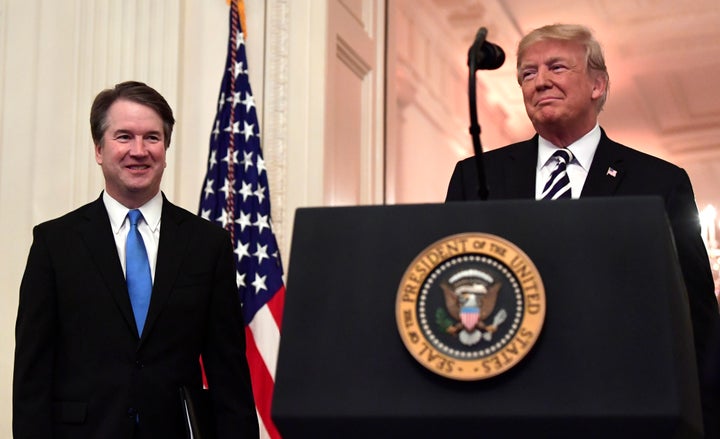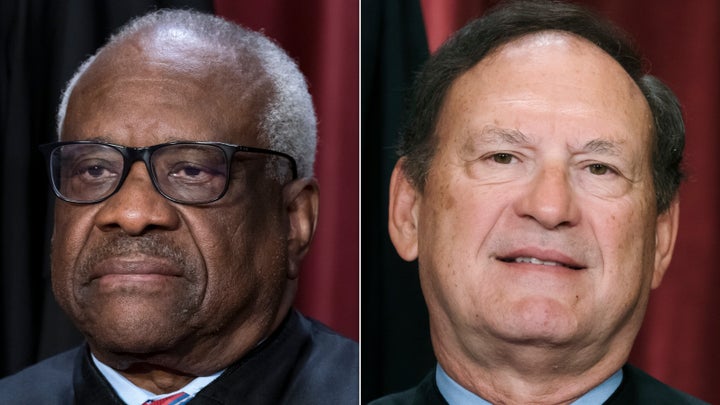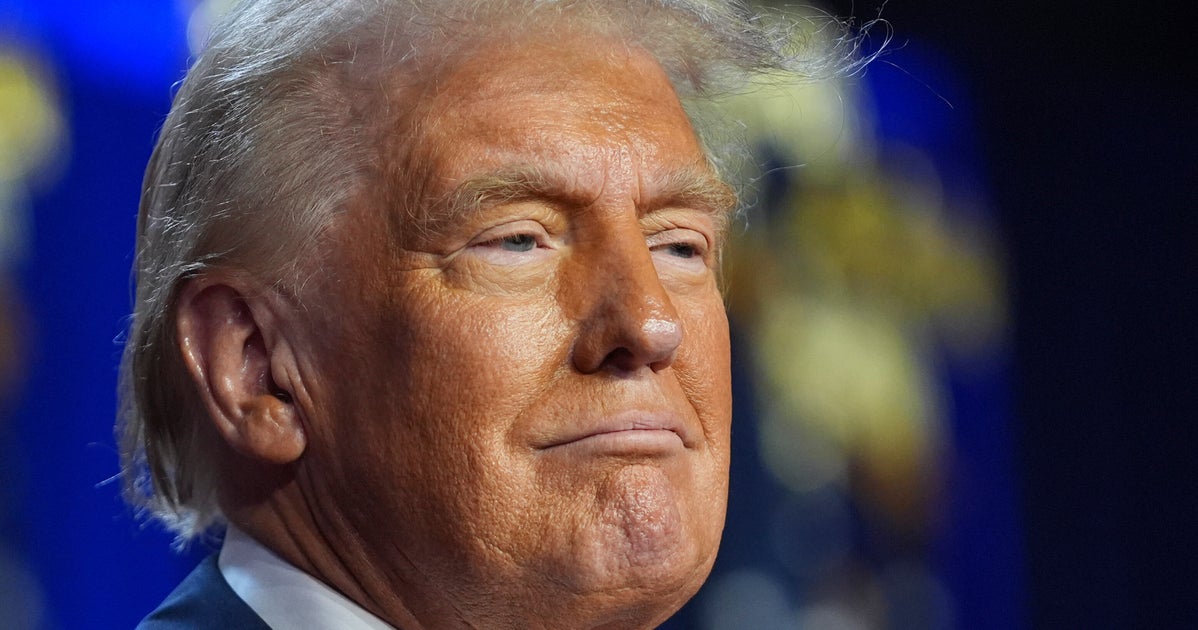WASHINGTON — Republicans had a very good night in Tuesday’s elections. Donald Trump won reelection to the White House. The GOP won back the Senate majority. And while the final outcome is still pending, Republicans appear on track to win control of the House, too.
The most lasting impact of this GOP sweep will arguably be felt on the courts. For at least two of the next four years, Trump can appoint dozens of far-right conservatives to lifetime federal judgeships all over the country, knowing that Senate Republicans will rubber-stamp virtually all of his picks. That’s exactly what they did in his first term.
From 2016 to 2020, Trump put so many unqualified and ideologically extreme people into lifetime federal judgeships that it was hard to keep up.
There was Leonard Steven Grasz, now a lifetime judge on a U.S. appeals court, who earned a rare and embarrassing “not qualified” rating from the American Bar Association but was confirmed anyway. Former colleagues described Grasz as “gratuitously rude,” per the ABA review, and expressed an “unusual fear” of consequences for saying something bad about him because of his “deep connection” to powerful politicians.
There was also Jonathan Kobes, now a lifetime judge on a U.S. appeals court, who also earned a “not qualified” ABA rating, as he “was unable to provide sufficient writing samples of the caliber required” of a circuit judge. He also failed to demonstrate “an especially high degree of legal scholarship and excellent analytical and writing experience,” per the ABA review.
And how can we forget Matthew Kacsmaryk, who is now the go-to federal judge in Texas for conservative groups trying to ban the abortion pill. Kacsmaryk previously called being transgender “a delusion” and said it was “a grave mistake” to include protections for LGBTQ+ people in the Violence Against Women Act.
Virtually every Senate Republican voted to confirm all of these judges, and so many more of the same ilk.
Democrats can’t do much to stop Trump from doing this again. The Senate’s rules only require 51 votes to advance and confirm federal judges. Republicans will have more senators than that. It used to take 60 votes to advance judicial nominees — a higher vote threshold aimed at forcing bipartisanship — but years of bitter partisan fights over confirming judges have left today’s Senate without that requirement for any judges.
The only thing Democrats can really do is make a lot of noise or add delays to the process. They can, for example, request to delay votes on judicial nominees by a week when they appear on the agenda for a Senate Judiciary Committee hearing for the first time. Both parties have done this for years when they’ve been in the minority, and the majority party regularly honors such requests.
Democrats could also drag out the time spent talking about particular judicial nominees when they come to the Senate floor for a vote. Senate rules allow for up to two hours of floor debate on a district court nomination and up to 30 hours of debate on an appeals court or Supreme Court nomination. Democrats could opt to blab through all of that time instead of giving consent to waive some of it to move forward.

There are hundreds of lower court judges — that is, federal judges on U.S. district courts and U.S. appeals courts — around the country. They all have lifetime appointments.
Most people, if they’re paying attention to courts at all, are focused on the Supreme Court. But it is the nation’s 13 appeals courts, one step below the Supreme Court, that overwhelmingly settle federal laws on major issues like abortion, same-sex marriage and immigration.
For some perspective: Federal appeals courts have the final say in roughly 50,000 cases a year. The Supreme Court resolves about 100.
This is why Trump, in his first term, was focused on filling dozens of vacancies on appeals courts. Thanks in large part to then-Senate Majority Leader Mitch McConnell (R-Ky.), Trump confirmed more appeals court judges in a single term than any past president. By the time he’d left office in 2020, nearly 1 in every 3 appeals court judges was a Trump pick.
Come January 2025, the newly installed Republican president can begin trying to fill even more appeals court seats. But he won’t have as many vacancies to fill this time.
“There will likely be fewer than five vacancies,” said Carl Tobias, a law professor at the University of Richmond in Virginia and an expert on federal judicial nominations.
Tobias said Democrats will likely use the lame duck session, which begins next week, to confirm four of President Joe Biden’s pending appeals court picks. Biden and Senate Democrats will almost certainly use the remaining weeks of the year to push through whatever eleventh-hour priorities they can before handing full control to Republicans in January.
“That will leave only a few openings for Trump in January 2025,” he said of appeals court vacancies.
Looking at the spread of appeals court judges nationwide, 34 are currently eligible to assume senior status, meaning they can semi-retire. Eighteen of those 34 were appointed by former President George W. Bush, and seven were appointed by a Democratic president.
Oftentimes, judges thinking of retiring will wait to do so until there is a president in the White House of the same party or ideology as the president who appointed them.
That’s why many of these 34 appeals court judges eligible for retirement “may be unlikely to assume senior status” when Trump is president, said Tobias.

As for the Supreme Court, there aren’t currently any vacancies. But, just as on the lower courts, conservative justices may decide to retire on Trump’s watch because they know he’ll replace them with younger justices just as conservative as they are.
Justice Clarence Thomas, 76, and Justice Samuel Alito, 74, are the two most likely to step down based on their ideological alignment with Trump. Older Democrat-appointed justices like Sonia Sotomayor, who is 70, are likely to remain on the court for several more years to prevent Trump from making the court even more conservative than it already is.
Of the Supreme Court’s nine justices, six are ultra-conservative — and three of those six were appointed by Trump in his first term: Brett Kavanagh, Neil Gorsuch and Amy Coney Barrett. Their votes were essential to the court’s decisions to toss out decades-old precedents like Roe v. Wade, which provided a constitutional right to an abortion, and the so-called “Chevron doctrine,” which gave federal agencies broad discretion to interpret ambiguous laws.
Tobias suggested people shouldn’t panic about the prospect of Trump using his second term to turn the Supreme Court into a full panel of nine conservative justices. He’s not convinced anyone on the court is about to retire.
“One big question is whether either Justice Alito or Thomas will resign. That seems unlikely,” he said. “Both are quite independent and neither is that old.”
In recent decades, the average retirement age for a Supreme Court justice has been over 80.
Beyond that, he speculated, Democrats are likely to win the Senate majority back in 2026.
So even if Trump wanted to replace Alito or Thomas with a younger conservative pick, “the Justices would have to resign rather soon,” Tobias said.
It’s too early to know what will be guiding Trump’s decisions on judicial picks this time. He has to assemble his White House team before any of that happens.
Democracy In The Balance
Support HuffPost
Already contributed? Log in to hide these messages.
Mike Davis, who leads the conservative legal group Article III Project, is calling on older and moderate judges to step aside and make way for a new generation of judges picked by Trump.
“It’s a good time to let a younger, more bold, more fearless conservative judge take your place,” Davis said Wednesday to Bloomberg Law.
And, in a Wednesday press conference, Senate Minority Leader Mitch McConnell (R-Ky.) emphasized Democrats are still the ones filling court vacancies in the final weeks of the year.
“One advantage of being the majority leader is you get to decide what to bring up,” he said of Senate Majority Leader Chuck Schumer (D-N.Y.) being in charge. “And I think if that’s what the majority leader wants to do, that’s what we’ll do.”

